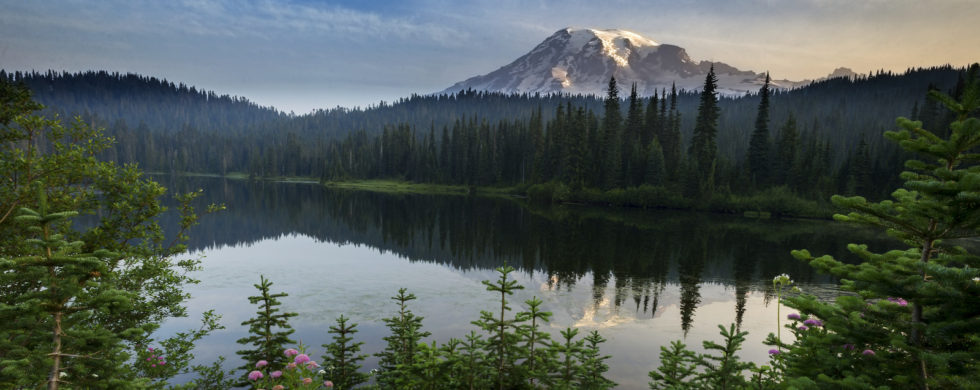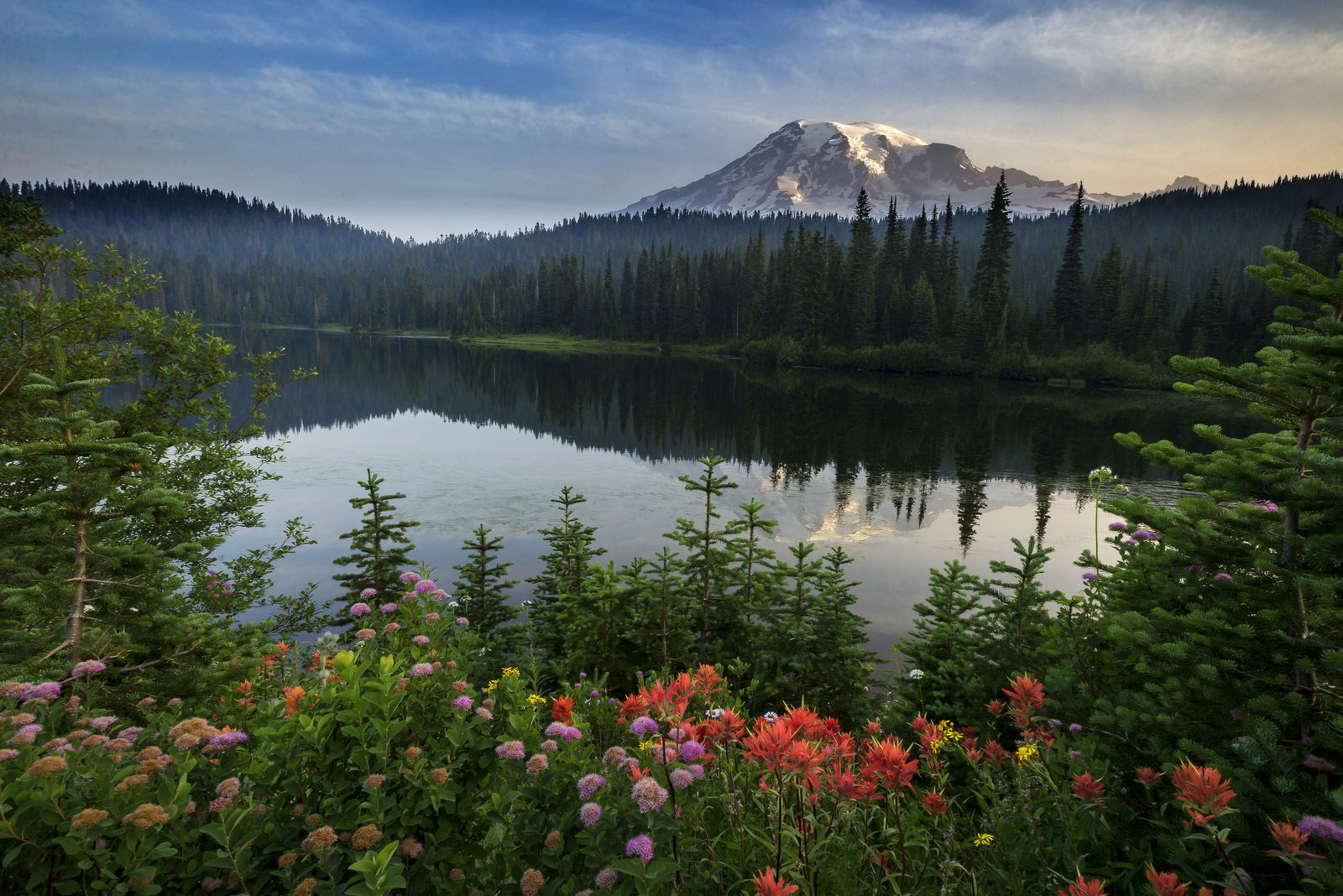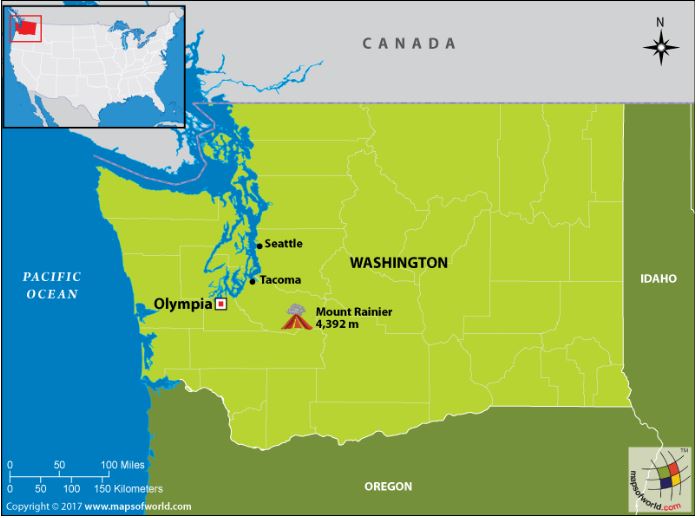
Sep
30
2018Dangerous Reflections
Shot of the Month – September 2018
Ahhhh, isn’t it beautiful? What a lovely, albeit frightfully dangerous, scene.
Say what? Dangerous? How could this tranquil spot be dangerous? Where are we?
This image was taken at Reflection Lake in Washington State. What is said lake in fact reflecting? Why that would be Mt. Rainier — the state’s tallest mountain with a summit reaching just over 14,000 feet. This lake is a tourist and photographer favorite as it can offer a wonderful view and reflection of this epic mountain. An image of Mt. Rainier from this vantage point is pretty much a portfolio requirement for any nature photographer visiting the area. In late summer one can include blooming wildflowers in the shot as I have done with the image above to add a dash of color to the composition. Sunrise is the best time to shoot from this spot as the water is most calm at this time of the day and offers the best chance for the still water needed to capture the reflection of the mountain. Soon after the sun is up the the water’s surface begins to ripple with the stirring winds and the iconic shot will often be gone until the next day.
Yeah, yeah, all very interesting, but what about the d-a-n-g-e-r-o-u-s part??
Are bears or cougars lurking nearby? No, no cougars but there are black bears in the park but they are not much of a risk. It turns out that Mt. Rainier is considered one of the most dangerous volcanoes in the world. Who knew?!! The mountain is so dangerous that it is on the Decade Volcanoes list — this is the list that all bad-ass-wanna-be volcanoes aspire to be on. Mt. Rainier is on the list because it has a great deal of glacial ice — an eruption could create massive lahars that could threaten large population centers near the city of Seattle.
Lahar? Yeah, me neither. Lahars are a violent type of mudflow made up of a slurry of pyroclastic material, rocky debris, and water. They can have the consistency of wet cement when moving. These flows can be super fast, potentially reaching speeds of 60 mph, and may be hundreds of yards wide and up to almost 500 feet high. These massive, fast flows can wipe out any structure in their path and provide very little time to react offering little chance to get out of the way of this wet cement freight train. You can’t outrun a fast-moving lahar…
Wow, so it seems that I just barely escaped the jaws of death. Who knew that landscape photography could be so risky? I may go back to photographing lions and jaguars where it is safe…
Until next month…michael
Nikon D4S, Nikon 17-35mm (@17mm), f/16, 1/15 sec, ISO 400



Liz
I’ll never view Mt. Rainer quite the same again. But thanks for the breathtaking shot. Not so sure I should visit the area next year after all. Can we please have some safe leopards?
Michael
Don’t let a little danger put you off!! And knowing how fearless you are, what’s a little volcano? Safe leopards…we are working on it!
Rialto Beach @ Michael Despines Photography
[…] Mount Rainer and the nearby Reflection Lake […]